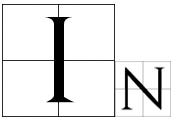Why Are There So Many Castles in Germany?
Experts estimate that a total of 25.000 castles exist in Germany. Why is that?
 In this picture, you see one example of a German castle. It’s the Burg Hohenzollern in the South of Germany. If you have ever been to Germany you may know that this is a pretty common view to have there. In fact, the European Institute of Castles (EBI) estimates that there are or have been over 25,000 castles in Germany alone, 60% of which still exist to this day, occupying under 400,000 km². That’s a castle about every 25 km or 15 miles. Seems like a lot, doesn’t it?
In this picture, you see one example of a German castle. It’s the Burg Hohenzollern in the South of Germany. If you have ever been to Germany you may know that this is a pretty common view to have there. In fact, the European Institute of Castles (EBI) estimates that there are or have been over 25,000 castles in Germany alone, 60% of which still exist to this day, occupying under 400,000 km². That’s a castle about every 25 km or 15 miles. Seems like a lot, doesn’t it?
For me, my whole life it seemed like the most normal thing in the world that every other Sunday we would go hiking to see some kind of ruins. It wasn’t until I started traveling a lot in my twenties and also had friends from other parts of the world visit my country that I realized it’s not like that everywhere. At about the same time, I started to wonder about where all these castles actually came from. Surely, we learned about it in school, but that for me only explained half of it. I felt like I had to connect the dots myself. That’s what I’m doing in this article.
What do we even mean when we say castle?
Firstly, we have to distinguish between a palace and a castle. Castles, as the European Institute of Castles (EBI), defines them were only built from the 8th-century until around 1545. As an example, the most famous German castle, Neuschwanstein Castle, which really should be called Neuschwanstein Palace, was only built in the 19th century. By the definition of the EBI, those palaces do not even count as castles. The ones we are discussing here would actually be better fitted to be called “fortresses”.
Why so many of those castles?
Well, there are many reasons. Many dots to connect. But here are four that seemed the most important to me.
Castles were not only built by or for rulers
As castles were fortresses rather than palaces, they were not only for the rulers of that time. They were something everyone who thought something of himself and who achieved something in life needed. They were a status symbol, much like a fast car or a mansion — a massive one at that — today. They were the difference between being a simple knight and being a nobleman. The castle as a status symbol was introduced some time in the 11th-century and lasted until the end of castles as defined above when fortresses as status symbols were replaced by palaces built mainly to entertain guests.
Castles had many functions
The social system that dominated in Europe during the Middle Ages is called feudalism. That means the king or emperor lends parts of his land to a vassal who in turn lends smaller parts out to smaller vassals. The smallest vassals would lend their land to farmers living there. In turn, farmers would give a part of their harvest away to their vassals for protection and shelter in the castle in case of an attack.
Castles were fortresses to provide shelter for all people of the territory against attacks from other regions. This was especially important as territories or administrative districts were very small and therefore attacks were common as the land was valuable.
Obviously, with all this land to lend and all those duties to pay there were a lot of administrative tasks to be done. Therefore, all castles had to work as an administrative center on top of their function as home and status symbol for their owners and shelter for all their protegees. Some castles were explicitly built only as a place to fulfill those administrative tasks.
Rulers of middle Europe were especially keen on castles
Back then Germany, as we know it today, didn’t exist. Instead, it was called the “Holy Roman Empire of the German Nation”. It had nothing to do with Romans but it was expected to replicate the Roman success of expanding the empire when it was founded in the 10th-century. In its best years, this empire extended from today's Italy over Switzerland, Austria, the Czech Republic, Germany, parts of Belgium, France, and Poland.
To rule such a big empire, rulers like Frederick I did not want to just rely on their vassals to represent them in every part of the country. He and his family, later known as the Staufer, had the strong belief that to reign is to be seen, so they were constantly traveling throughout the kingdom. To make those travels with all their entourage possible, castles were built only 15 miles apart from each other, as that was the distance that could be safely traveled in one day. Those castles were called “Kaiserpfalz”.
Castles were built over a long period of time
Castles as fortresses were built over nearly 800 years in similar ways. Surely, technology improved and building style evolved, but still, over all these years castles stayed recognizable as such. So, many rulers and noblemen passed by as time went on to built their castles for their very own reasons each.
To conclude
So, ultimately this massive amount of castles in Germany and the whole of Europe exists because they were not just meant for kings and queens, but they were for knights and nobleman that had a small fortune to spend on very expensive and protective housing to protect themselves, their families, their people, and their property.
How did it go on?
As castles mainly were built to protect from enemies coming at you to fight in close combat, when guns and cannons were invented their use was lost. Enemies now could destroy your fortress from afar, hidden in the bushes, while the castle's owner could do nothing but watch it happen and fire the bushes blindly. Castles as fortresses lost their importance. Instead, kings and queens started to build palaces for living and entertainment only. Protection had to be achieved in other ways. So, the emperors of Europe started to build summer palaces and winter palaces. And, with a lot of different rulers in different, mostly small, territories over time there came a lot of those as well.
If you enjoy reading stories like this one, consider subscribing to Medium for only $5 a month. With the membership you can read all stories and support me and thousand more writers. A win-win!
